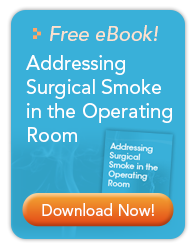 Article by Medical Illumination International - January 13, 2012
Article by Medical Illumination International - January 13, 2012
The many advantages of LED lighting as an alternative to traditional halogen sources in hospitals go far beyond surgery and examination use. There are many spaces that require varied degrees of lighting within hospitals, such as hallways, nursing stations, waiting rooms, exterior walkways and patient rooms. For lighting upgrades, the most important priorities are efficiency, patient comfort and an ideal staff working environment. In addition, hospitals have to comply with federal and state work safety regulations, and ensure that certain tasks have proper lighting support. But when the fixture price, installation cost and energy consumption are combined, halogen and/or fluorescent lighting can severely drain a hospital's budget.
Compared to other types of medical facilities, hospital lighting needs are a clear exception due to their 24/7 status, with most lighting in operation on a constant basis. Lighting represents an average of 16 percent of a hospital's total energy consumption, and more than 40 percent of its electricity use (Ferenc, 2011). Changes to more energy efficient lighting can present benefits that surpass the obvious ones. According to a study at a Netherlands hospital, 64 percent of medical staff reported better concentration and 46 percent felt more fit when working in areas with bright, dynamic lighting (Philips, 2011).
An important factor with any lighting retrofit plan for a medical facility is long-term return on investment. Front-end cost should not be a primary consideration, since the total savings over time will exceed that amount by a significant margin. Also, a hospital's strategic plan (for at least the next five years) should factor in the cost savings of energy-efficient lighting and how those excess funds could be reallocated for other projects. In summary, a consensus of facilities management professionals and strategic plan analysts at hospitals agree that halogen and incandescent light sources are outdated and less ideal compared to their LED and solid-state counterparts.
In its new state-of-the-art East Tower, opening in January 2012, Chicago's Rush University Medical Center chose to utilize LED lighting throughout the entire facility. A video profile of the project can be viewed via the YouTube link below, and an interactive tour of the new building can be found here: http://transforming.rush.edu/Pages/welcome.aspx
The U.S. Department of Energy's Commercial Building Initiative summarizes the benefits of hospital LED lighting in this brief summary paper, which includes a case study of a Maryland hospital: http://apps1.eere.energy.gov/buildings/publications/pdfs/alliances/hea_lighting_fs.pdf
Sources:
Ferenc, J. (2011). Lighting the way. Health Facilities Management, 24(2), 32-36.
Hospital Lighting (2011). Lighting Applications Support Group, SR. Philips. Retrieved from http://www.keralaenergy.gov.in/seminars/Hospital/HOSPITAL%20LIGHTING.pdf
This article: Copyright 2011-2012, Medical Illumination International, Inc. All Rights Reserved.
Image courtesy of digidreamgrafix / FreeDigitalPhotos.net








